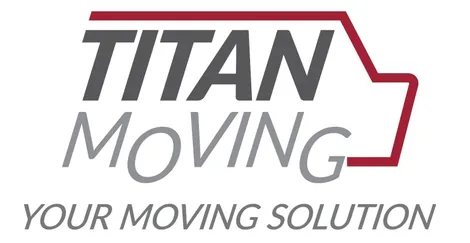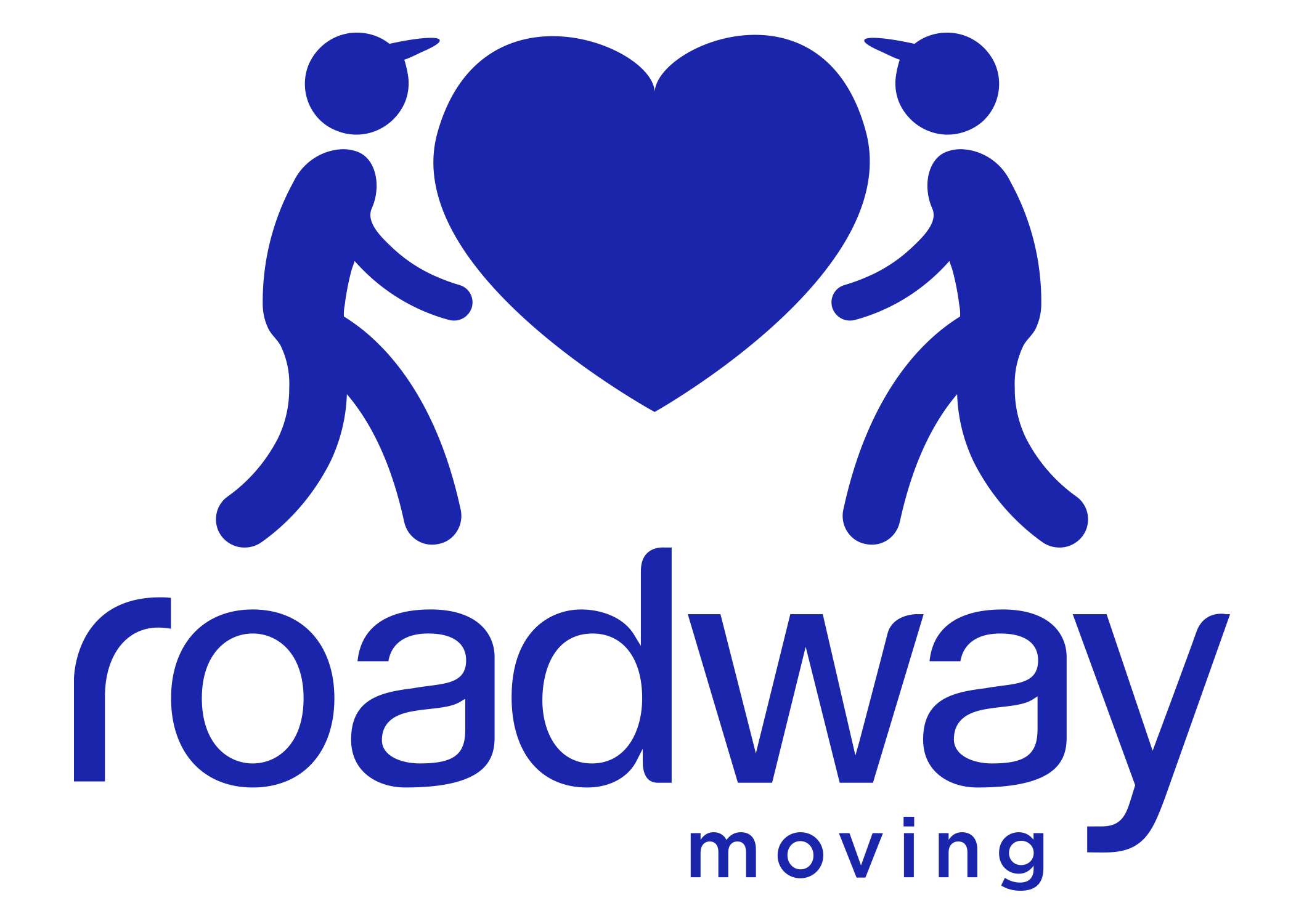The best local moving companies in Kansas
In Kansas, there are 18 interstate moving companies available to accommodate your move to Montana. To make your decision easier, we’ve put together a list of the best local movers in Kansas, all known for their solid reputations, clear pricing, and impressive customer satisfaction.
- Johnson Storage & Moving: 4.56 out of 5 stars
- Titan Moving: 4.5 out of 5 stars
- Professional Moving & Storage: 4.5 out of 5 stars
- College Hunks Hauling Junk & Moving: 4.5 out of 5 stars
- Mike Hammer Moving: 4.48 out of 5 stars
Company Info
Years in Business: 124
DOT #: 286130
Alternate Names: Johnson Logistics Kansas, LLC
Johnson Storage & Moving has been a trusted name in local residential moving services in and around Topeka, KS, since 1901. Unlike many nearby moving companies, Johnson Storage & Moving also offers specialized services such as packing, unpacking, and crating, ensuring a comprehensive moving experience. While the company boasts an A+ rating from the Better Business Bureau, consumer reviews are mixed, with an average Yelp rating of 1.3 based on 13 reviews and a more favorable Google My Business rating of 3.6 from 109 reviews. They accept both cash and credit cards, and no deposit is required, making the process straightforward and hassle-free.
Services Offered
- Local moves
- Interstate moves
- International moves
- Packing
- Unpacking
- Offices
- Pianos
- Pool Tables
- Art
- Antiques
- Crating
- Shipment tracking
- Storage
- Pay by cash
- Pay by credit card
- DOD certified
Company Info
State license #: 2727872
Years in Business: 10
DOT #: 2727872
Titan Moving, a reputable local residential moving company servicing Wichita, KS, has been in business since 2015. Unlike other nearby movers, Titan Moving stands out with a stellar Google review average of 4.8 from 347 reviews, a contrast to its more mixed Yelp profile. The company boasts an A+ rating from the Better Business Bureau, underscoring its commitment to customer satisfaction. Titan Moving offers comprehensive services, including packing, unpacking, and specialized handling for pianos and art, ensuring a stress-free moving experience. With no deposit required and various payment options accepted, Titan Moving is a reliable choice for local relocations.
Services Offered
- Local moves
- Interstate moves
- Packing
- Unpacking
- Offices
- Pianos
- Art
- Crating
- Crane vans
- Shipment tracking
- Full-valuation coverage
- Storage
- Fragile-only packing
- Pay by money order
- Pay by cash
- Pay by credit card
- DOD certified
Company Info
Years in Business: 28
DOT #: 917983
Alternate Names: Professional Moving & Storage, Inc.
Professional Moving & Storage, established in 1997, offers reliable local residential moving services in and around Lawrence, KS. The company stands out with an impressive Google My Business rating of 4.8 from 323 reviews and an A+ rating with the Better Business Bureau, indicating high customer satisfaction and trust. Unlike some nearby movers, they also provide office moving, fragile-only packing, and can handle delicate items like pianos and antiques, ensuring a comprehensive moving experience. While a deposit is required, they accept credit cards and offer full valuation insurance coverage, making them a dependable choice for local moves.
Services Offered
- Local moves
- Interstate moves
- Packing
- Unpacking
- Offices
- Pianos
- Art
- Antiques
- Crating
- Full-valuation coverage
- Storage
- Fragile-only packing
- Pay by credit card
- Deposit Required
Company Info
Years in Business: 5
DOT #: 3286258
Alternate Names: College HUNKS Hauling Junk and Moving Topeka and NW Kansas City , ROJO, Inc. , College HUNKS Hauling Junk & Moving
College Hunks Hauling Junk & Moving, based in Topeka, KS, has been providing reliable local residential moving services since 2020. Unlike many nearby companies, they also offer office moving, packing, and unpacking services, making them a versatile choice for various moving needs. With an impressive 4.9 average rating from 542 Google reviews and an A+ rating from the Better Business Bureau, they stand out as a reputable mover, despite mixed Yelp reviews. Conveniently accepting credit cards and requiring no deposit, they streamline the moving process for their clients.
Services Offered
- Local moves
- Packing
- Unpacking
- Offices
- Storage
- Pay by credit card
Company Info
Years in Business: 38
DOT #: 2929832
Alternate Names: Mike Hammer Moving LLC
Mike Hammer Moving, a trusted local moving company based in Lenexa, KS, has been serving the community since 1988. This experienced team excels in local residential moves and offers a comprehensive range of services, including packing, unpacking, and specialty moving for items like pianos, safes, and antiques. They boast stellar consumer reviews with an impressive 4.8 rating on Google from 389 reviews, outshining many nearby competitors, and hold an A rating from the Better Business Bureau. While a deposit is required, their commitment to quality and customer satisfaction makes them a dependable choice for local moves.
Services Offered
- Local moves
- Interstate moves
- Packing
- Unpacking
- Offices
- Pianos
- Pool Tables
- Art
- Antiques
- Crating
- Fragile-only packing
- Safes
- Pay by credit card
- Deposit Required
The best Kansas to Montana moving container companies
Moving containers help you save money without having to do all the heavy lifting. You load and unload your stuff, while the company handles all the driving, picking up your container in Kansas and dropping it off at your new home in Montana.
Check out our top picks for the best moving container companies:
|
|
|
|
The best Kansas to Montana moving truck rentals
Want to save money on your move from Kansas to Montana? Consider renting a moving truck. With this option, you’ll do all the heavy lifting, packing, and driving yourself.
Check out our favorite picks for rental moving trucks:
|
|
|
|
The best Kansas to Montana labor-only movers
Need an extra set of hands for loading your belongings into a rental truck or storage unit? Labor-only movers have you covered. You pick the team size that works for you, and you’re only charged for the hours they’re on the job.
When you’re getting ready to move from Kansas to Montana, make your move a breeze with these top-rated moving labor companies.
|
|
|
|
How we chose the best moving companies for your KS to MT move
moveBuddha’s expert team analyzed moving rates from 19 Kansas movers and listed the top movers based on customer satisfaction, reviews, and cost.
- Customer satisfaction (40%): Shows up on time, communicates clearly, and delivers within the estimate.
- Dispute resolution (20%): Takes responsibility and follows through with fair solutions when problems occur.
- Industry reputation (15%): Earns respect across the industry and participates in conferences and organizations.
- Online reputation (15%): Up-to-date site content and prompt, professional engagement online.
- Service options (10%): We look for companies with a deep breadth of services including full packing, storage, specialty item handling, and expedited delivery.
Here is our full moving company rating methodology.
How much does it cost to move from Kansas to Montana?
Check out the table below for average moving cost estimates from Kansas to Montana, broken down by home size and type of moving service.
| Move size | Moving company | Moving container | Rental truck |
|---|---|---|---|
| Studio / 1 bedroom | $1,132 – $4,935 | $849 – $2,012 | $713 – $1,302 |
| 2-3 bedrooms | $2,433 – $6,110 | $1,447 – $3,127 | $726 – $1,548 |
| 4+ bedrooms | $4,280 – $7,831 | $2,056 – $4,123 | $921 – $1,959 |
*The figures shown are approximate for a 1,057-mile relocation from KS to MT, derived from moveBuddha pricing data current as of Nov 04, 2025. moveBuddha aggregates thousands of verified quotes from movers across the country and updates them monthly to capture seasonal and market fluctuations. Final pricing will depend on move size, optional services, parking/access issues, fuel rates, and schedule. We suggest requesting estimates from multiple movers for the best accuracy.
Cost to hire movers from Kansas to Montana
When moving a studio or one-bedroom from Kansas to Montana, you’ll likely pay between $1,132 and $4,935. If you have a two- or three-bedroom home, expect costs to fall somewhere between $2,433 and $6,110 for the same journey (KS to MT). Moving four or five bedrooms? Typical prices range from $4,280 to $7,831.
Cost of moving containers from Kansas to Montana
When you’re heading from Kansas to Montana, and you’re only moving a few items, you can expect to spend between $849 and $2,012. For a two- or three-bedroom place, prices usually fall between $1,447 and $3,127. If you’re packing up a large home with four or more bedrooms, the cost can range from $2,056 to $4,123. Want more details? Check out our complete PODS cost guide.
Explore the top budget-friendly moving container companies to make your move from Kansas easier and more affordable.
Cost of moving truck rentals from Kansas to Montana
A moving rental truck is generally the cheapest option, but it requires you to do all of the driving and labor.
Moving a studio or one-bedroom apartment in a rental truck will cost around $713 to $1,302. A two to three-bedroom move will cost $726 to $1,548, and moving a home with four or more bedrooms from Kansas to Montana costs around $921 to $1,959.
These quotes include the estimated fuel cost.
Factors affecting the cost of moving from KS to MT
Lots of things can impact how much it costs to move from Kansas to Montana. Here’s what ultimately affects your final price:
- How big your haul is: More rooms and belongings mean higher costs compared to moving light with only a few items.
- The season you move: Costs spike during the busy summer season in Kansas when demand for movers is highest.
- DIY vs. calling in the experts: A DIY move is easier on the wallet, but professionals make the process far less stressful.
What to know before moving from KS to MT
If you’re moving to Montana from Kansas, you’ll want to compare what life will be like.
Cost of living: Kansas vs. Montana
Understanding how costs compare between Kansas and Montana can make planning easier. Taxes, housing, job markets, and income all shape your budget, and this breakdown highlights the biggest differences:
| Kansas | Montana | |
|---|---|---|
| Average rent | $986 | $974 |
| Average home cost | $229,012 | $462,631 |
| Average income (per capita) | $69,747 | $66,341 |
| Cost of living index | 87 | 100 |
| Unemployment rate | 3.4% | 3.3% |
| Average sales tax | 8.65% | 0.0% |
| State income tax | 5.7% | 6.75% |
- No need to stress about your budget—rental rates are about the same when you’re moving from Kansas to Montana.
- Prepare for a higher monthly mortgage. Home prices in Montana are typically about 102% higher than in Kansas.
- The average income is about the same in both Kansas and Montana, so you won’t need to worry about a big change to your budget.
- The cost of living is 15% higher in Montana than in Kansas. If you’re making the move to Montana with a higher cost of living, it’s important to plan carefully to ensure your finances can support the transition.
- Unemployment rates are pretty similar in Montana and Kansas, so you probably won’t notice much change in job opportunities or competition after your move.
- Montana doesn’t charge a sales tax, so you’ll save money on regular purchases compared to Kansas.
- Income taxes in Montana are 18% higher than in Kansas, so you’ll be paying more in state taxes and taking home a bit less pay.
How life is different in Montana vs. Kansas
The impact of moving goes far beyond finding a job or home. Everyday life is shaped by factors like climate, safety, politics, and community size. Take a look at how Montana and Kansas line up on these lifestyle indicators.
| Montana | Kansas | |
|---|---|---|
| Population | 1,132,812 | 2,940,546 |
| Political leaning | Republican 58.4-38.5 | Republican 57.1%-41.1 |
| Summer high | 84ºF | 91ºF |
| Winter low | 12ºF | 19ºF |
| Annual rain | 15″ | 33″ |
| Annual snow | 49″ | 15″ |
| Crime index | 23.37 | 24.07 |
- The population of Montana is approximately 61% lower than the population of Kansas. Moving to a less populous state can offer affordability, space, and simplicity, but may also require adjusting to limited services or slower job growth.
- In the most recent presidential race, both Kansas and Montana leaned Republican.
- Montana sees average summer highs of 84°F, compared to 91°F in Kansas. Cooler summers mean less extreme heat, lower energy bills, and easier outdoor living.
- In the coldest months, Montana sees lows of 12°F compared to 19°F in Kansas. That colder climate means higher heating costs and tougher winters — but also snowy scenery and seasonal activities.
- In Montana, you’ll get about 15 inches of rain each year — less than the 33 inches you’re used to in Kansas. That means more sunshine, more time outside, and fewer weather concerns.
- Each year, Montana sees about 49 inches of snowfall, while Kansas averages just 15 inches. With more snow comes stunning winter scenery and plenty of outdoor fun, but also the need for extra preparation and warm gear.
- Both Montana and Kansas share similar crime rates (24.07). However, crime levels can vary widely between different cities and neighborhoods, so it’s a good idea to look up local crime stats for a clearer picture.
Comparing the pros of Kansas vs. Montana
New beginnings can be really exciting. Here’s a quick comparison between life in Montana and Kansas:
| Pros of living in Kansas | Pros of living in Montana |
|---|---|
| Delicious barbecue | Unmatched natural beauty |
| Low cost housing | Bountiful outdoor opportunities |
| Cheap living | Ample economic opportunity |
| Four season living | Delicious unique cuisine |
| Ample economic opportunity | No traffic |
Comparing the cons of living in Kansas vs. Montana
Everything can’t be sunshine and rainbows all the time, no matter where you live. Here are some things to be aware of when leaving Kansas for Montana:
| Cons of living in Kansas | Cons of living in Montana |
|---|---|
| Extreme weather | Dangerous wildlife |
| Dull landscape | Remote lifestyle |
| High taxes | Touristy |
| Lack of public transportation | Lacking in urban amenities |
| Remote small-town lifestyle | Challenging weather |
Other things to consider for your Kansas to Montana move
- HOA rules: Before moving day, make sure to review any rules your neighborhood or community might have so your move goes off without a hitch.
- Elevator reservation: Make sure to reserve your building’s elevator as soon as possible and review any moving day rules well in advance.
- Parking permits: Some cities expect you to have a parking permit for moving trucks, so double-check your new area’s rules before moving day to prevent any last-minute headaches.
- State licensing: In Montana, local and intrastate movers need to have a valid Public Service Commission (PSC) number issued by the Montana Department of Transportation (MDOT). Make sure your moving company is fully licensed before you book.
- State regulator: You can verify a Montana moving license and its status on the state regulator’s official website.
- Moving permits: You don’t need a moving permit in Montana, but it’s a good idea to look into local parking rules before your move.
- Change of address: Make sure to submit your USPS change of address form at least a week before moving. Once you set your move date, your mail will start forwarding to Montana right on schedule. Get started here.
- Mover’s insurance: By law, interstate movers have to give you basic insurance known as “released value protection” at no extra cost. Opt for Released Value Protection, a no-cost option from movers with basic coverage. Movers assume liability for up to 60 cents per pound per item. For instance, if your mover lost or damaged a valuable painting weighing 20 pounds, you would only receive $12 (60 cents x 20 pounds). To ensure comprehensive coverage for the full value of your items, discuss alternative options with your chosen moving company or consider a third-party insurance provider.
- Moving checklist: Make moving day a breeze with our straightforward moving checklist, which can help you stay on track and make sure you don’t miss any steps.
Things to do in Montana
While you’re in Montana, you won’t be bored. These are some of the coolest places to visit in your new home state:
Museums in Montana
- National Museum of Wildlife Art
- Museum of the Rockies
- Aerial Fire Depot and Smokejumper Center
- Moss Mansion
- Conrad Mansion
Parks in Montana
- Lone Pine State Park
- Caras Park
- Sacajawea Park
- Herron Park
- Phil Baux Park
Sports teams in Montana
- Montana Grizzlies (NCAA)
- Montana State Bobcats (NCAA)
Universities in Montana
- Montana State University
- The University of Montana
- Montana Tech
- Montana State University Billings
- Carroll College
FAQs
What is the cheapest way to move from Kansas to Montana?
Going with a full-service Kansas moving company is a bigger financial investment, but it saves you a ton of hassle. If you’re looking to cut costs, renting a moving truck or using a moving container will keep your budget in check, but you’ll have to do more of the heavy lifting. Want more options for saving money? Check out our tips on the cheapest ways to move out of state.
Do movers transport your car from Kansas to Montana?
A lot of full-service movers will handle auto transport for you, usually for an added cost. Or, if you prefer, you can arrange vehicle transport from Kansas to Montana on your own through a top car shipping company.
What are the benefits of moving from Kansas to Montana?
An increasing number of people are relocating from Kansas to Montana to enjoy all the great benefits Montana provides, such as unmatched natural beauty and bountiful outdoor opportunities.
Is it cheaper to live in Kansas or Montana?
Living in Kansas usually costs less than in Montana. Housing is much more affordable in Kansas, with average rent about 1% less and home prices 50% lower than in Montana. Taxes are also lower in Kansas, most notably income taxes, which are more than 10% less than those paid by Montana residents.
How much should you make a year to live comfortably in Montana?
Thinking of moving to Montana on your own? You’ll want to earn around $62,210 to cover your expenses comfortably. If you’re living solo, expect to spend about $2,225 per month, or around $5,468 if you have a family of four. Where you choose to live makes a big difference, too. Bigger cities like Billings and Missoula tend to have higher housing costs compared to smaller towns.
Helpful moving resources
Kansas moving services
Popular Kansas routes
Popular moving resources
Not what you were looking for?
Check out other categories that can help you find the information you need!






















